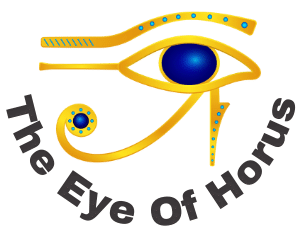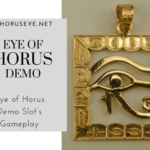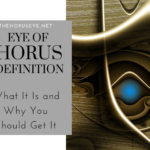Egyptian Eye Of Horus in ancient Egypt, the symbol representing protection, health, and restoration. The Egyptian eye most frequently refers to the Eye of Horus. The Eye of Horus represents security, great power, and success.
The extraordinary saphenous vein is often seen in cross-sections see as the “Egyptian eye sign” or “sonographer eye sign” on ultrasound. The Eye of Horus, also known as the Wadjet or “Egyptian Eye,” is an ancient Egyptian symbol of protection, power, and good health. It is often depicted as a human eye with a marked eyebrow and is surrounded by a pair of feathers. It represents the eye of the god Horus and is sometimes referred to as the “Eye of Ra.”
The Eye of Horus, also known as the Udjat or the Wadjet Eye, is a powerful symbol that originated in ancient Egypt. It holds deep cultural and religious significance and has remained an iconic representation of Egyptian mythology. The Eye of Horus symbolizes protection, healing, and the divine power of the gods. In this article, we will explore the origins, meaning, and cultural significance of the Egyptian Eye of Horus.

The Old Egyptians involved the Eye of Horus as an image of safety, magnificent power, and well-being. Normally, it looks like a natural eye. It is said that the left eye addresses the moon while the right eye addresses the sun. One more name for the two eyes is “The Eyes of Horus.”
In Egyptian symbolic representations, the Eye of Horus controlled the importance of expressions that signified “to guard” or “to restore.” It might likewise be viewed as a metaphor for creative fix and recuperation.
The Horus Eye’s Hidden Meaning
In ancient Egypt, the Eye of Horus was filled in as an image of well-being, lofty power, and great well-being. It is otherwise called “the whole of Egypt” and the “divine eye.” It’s a strong similitude that can be deciphered in different ways. The most successive portrayal comprises a white part addressing the iris and a dark piece addressing the understudy.

A special necklace is a little thing that certain individuals accept that may bring them karma and insurance. In a tremendous assortment of societies and religions, special necklaces are worn for security. Perhaps the most notable ornament in history is the Egyptian Eye, which was remembered to give karma and security.
The eye addresses the insidious that is initially rebuffed, yet it additionally addresses information, complete vision, actual respectability, and the association of all species into one element. Numerous Egyptian emblems contain it, and whoever wears one will encounter favorable luck.
As indicated by specific old Egyptian wayfarers, wearing jewelry with a portrayal of the widget or udjat would permit them to see the waters all the more obviously and have the seas all the more accurately mirror their way. On the boats’ curves on the opposite side, the image was incidentally painted.
This Guide Will Show How to Make an Egyptian Eye of Horus
Get a photo of your desired eye to use as the special necklace’s eye first. Find one on Google Images or Pixabay, or draw one yourself. The image is imprinted in the last stage onto a square of paper (cut off any overabundance of paper).

The different augmentations to talismans, valuable stones, protecting plates expected to cover wounds supported during the treatment of the mummies, and so on show that the eye was utilized basically as a cautious weapon. During the First Intermediate Period and the Middle Kingdom, the two painted eyes that were typically painted on the left half of stone caskets without a doubt had a defensive reason notwithstanding their other significance.
The mummies’ left-confronting direction proposed that they would act as passageways for the dead to arrive at the rest of the world, yet clearly, they had a defensive capability. Like this, the painted Horus eyes on the boat’s bows were there to watch and guide.
In the New Empire, the blessed eye was in many cases displayed as an image of the defensive power that stands behind rulers and God portrayals. These photos additionally show the pharaonic God Nekhbet around it. The penance could likewise represent the eye of Horus as a result of its celebrated past. Thus, the reestablished eye of Horus, which he provided for his dad Osiris, filled in as both an image of the demonstration of giving and a continuation of the actual gift.
Because of the eye of Horus’ resemblance to the pineal organ and its contemporary allure as a tattoo, old convictions about its defensive powers have been restored, as have significant undertones with the third eye. As a token of regard for his folks, the oldest child moreover offered the eye of Horus to his departed dad.
How Would You Use the Eye of Horus at the Present Time?
Individuals have generally used the “Eye of Horus” as a defensive image after the breakdown of the old Egyptian civic establishments. To safeguard oneself from the terrible goals of others, many individuals wear adornments with this seal on them nowadays. It might likewise be found usually in imaginative works like compositions, banners, and other realistic plans. To battle off malicious, Mediterranean anglers and mariners paint their vessels with “Eyes of Horus.” On dollar notes, there are two images known as the Eye of Horus and the Eye of Providence.

Because of their conviction that it is an image of basic power, certain soothsayers, like Thelemites, generally portray the Eye of Horus as a triangle. Fear-inspired notions guarantee that many eye images, similar to the Eye of Horus, are fundamentally something similar and represent subjugation, trickery, control, and mastery over information and data.
Thought to be responsible for some contemporary organizations, as a matter of fact. The broad utilization of the Eye of Horus image in gems configuration loans legitimacy to the possibility that in current culture, it represents security, riches, power, and government. Because of the stories around it that have aroused individuals’ interest, a few groups wear the Eye of Horus image with a similar immovable faith in the security it gives.
Fragmentary Portrayal and the Horus Eye
To convey parts, the Egyptians made a framework that is somewhat complex. One was a person from the open country, while the other two had legendary or additional persevering through starting points.

The last option gave this framework a legendary quality by utilizing every one of Horus’ eye’s singular parts to sub for six unique divisions in a numerical movement, with the unit filling in as the single denominator and the denominator expanding by twos until amounting to 1, the heavenly unit represented by the entire eye and implying the eye recuperated by that.
Egyptian Eye Of Horus’ Cerebrum Associations
Otherwise called “Eye of the Mind,” Horus’ Eye is a puzzling item. Incredibly, when the Eye of Horus is superimposed over a cross-part of the human mind, every one of the six eye segments seems to compare to the essential tactile focuses of our five faculties and to the corpus callosum, the biggest gathering of white matter strands in the cerebrum that advances correspondence between the two parts of the mind.

Incredibly, while being pioneers in life structures and medication, the old Egyptians seemed to grasp the crucial standards of administering the working of the focal sensory system without the guidance of contemporary science. The accompanying rundown of cerebrum regions compares to a specific piece of the Eye of Horus:
Smell: The olfactory trigone is situated in a triangle region on the right half of the eye.
Vision: The neothalamic grip and the focal point of the eye are connected regarding vision. The corpus claustrum’s shape and area are reflected in the eyebrow.
Hearing: Bradman locales 41 and 42, which are the focal point of human hearing, are situated in the triangle on the left half of the eye.
Taste: The curl-like, tail-formed thing addresses the taste pathway in the mind.
Touch: The tear-formed object is situated in a manner that mirrors the somatosensory course, which conveys different sensation encounters.
Cultural Significance and Modern Interpretations in Egyptian Eye Of Horus
The Eye of Horus is an ancient Egyptian symbol that holds great cultural significance and continues to be interpreted in various ways in modern times. Also known as the Wedjat or the Eye of Ra, it represents protection, healing, and royal power.
In ancient Egyptian mythology, the Eye of Horus was associated with the god Horus, who was often depicted with a falcon’s head. The symbol is believed to have originated from the story of Horus losing his left eye during a battle with his uncle, Seth. After his eye was restored by the god Thoth, it became a powerful symbol of healing and restoration.
The Eye of Horus was widely regarded as a symbol of protection. It was believed to possess magical and protective qualities that warded off evil spirits and provided divine protection to the wearer. As such, it was commonly used in amulets and talismans, often worn as jewelry or incorporated into personal belongings.
Furthermore, the Eye of Horus was associated with the concept of “ma’at,” which represented order, balance, and truth in Egyptian society. It was believed that the Eye of Horus helped maintain this balance by warding off chaos and promoting harmony.
In modern times, the Eye of Horus has retained its cultural significance and is often used as a decorative motif in art, jewelry, and tattoos. Its popularity has spread beyond Egypt and has become a symbol of protection, good health, and spirituality in various cultures around the world.
Additionally, the Eye of Horus has been subject to various interpretations in different contexts. Some interpret it as a symbol of inner vision and insight, representing the awakening of higher consciousness and spiritual awareness. Others see it as a symbol of personal strength and resilience, invoking the qualities of the ancient Egyptian gods in overcoming challenges and obstacles.
Overall, the Eye of Horus continues to be a powerful symbol that transcends time and culture. Its rich history, cultural significance, and versatile interpretations make it a fascinating and enduring symbol in the modern world.
Conclusion:
The Eye of Horus, an image of insurance, is regularly painted on the mummies’ temples. It apparently gives security from evil, life’s dangers, and misfortune. The Eye of Horus originally appeared as an image in old Egypt. Its significance has been deciphered contrastingly over the long run by a few societies. Its significance these days is most often perceived to mean security and prosperity.
The Eye of Horus was at first utilized as an image in old Egypt, and after some time, different societies have deciphered it in an unexpected way. Right now, it is accepted most usually that notwithstanding being respected to address the sun’s circle or an omnipresent eye, it additionally addresses wellbeing and security.





